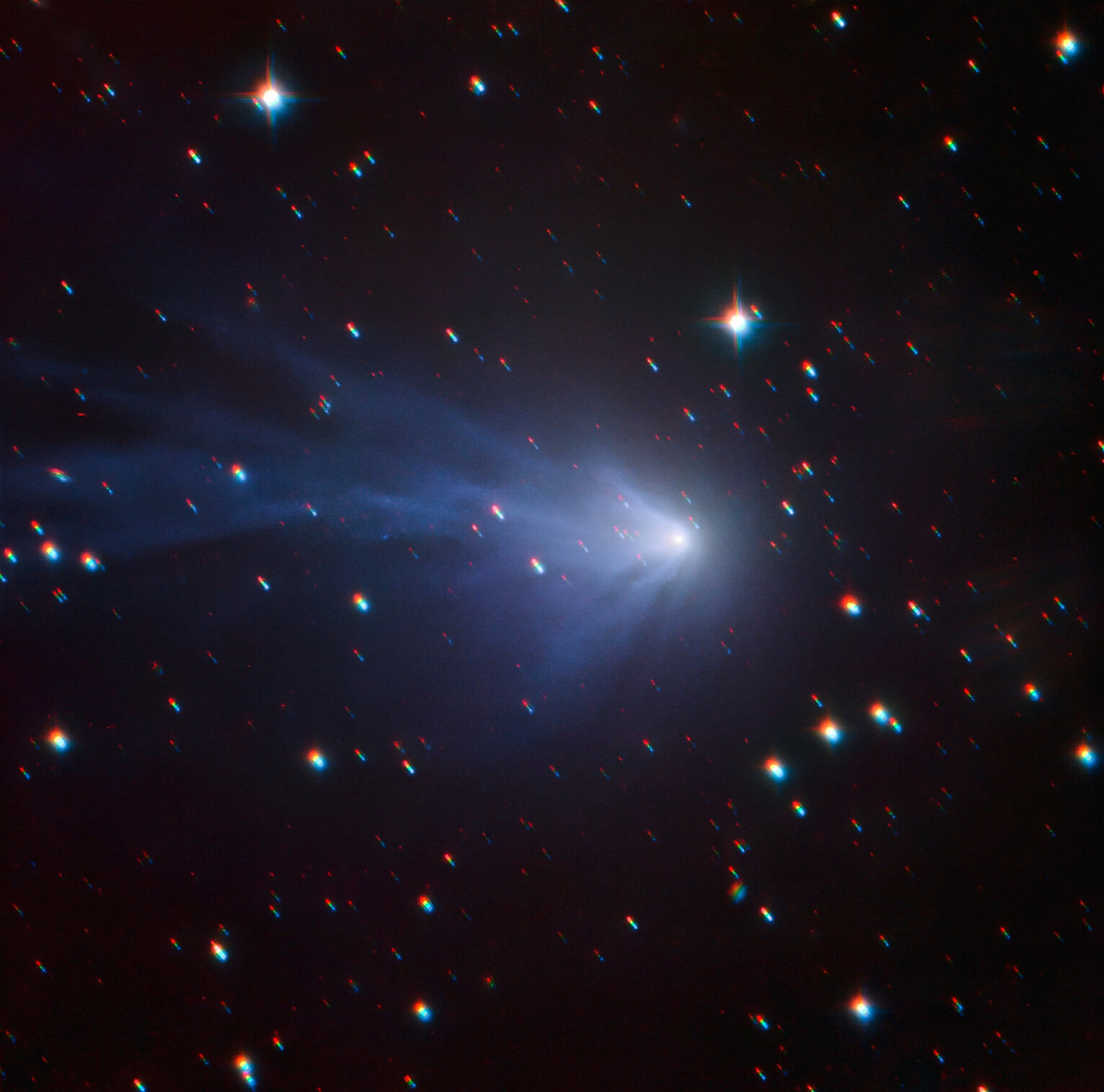
Last year, astronomers in Paris noticed a beautiful and distinctive comet, technically called C/2016 R2 but more colloquially known as “the blue comet” for its unusual hue. Now, the European Southern Observatory (ESO) has released this new image showing the comet up close.
C/2016 R2 is believed to originate from the Oort Cloud, a distant region of our solar system with objects orbiting the sun that are far beyond even the Kuiper Belt. The cloud consists of billions or even trillions of objects which form a sphere all around our sun, unlike the planets and the Kuiper Belt which form more of a flat disk shape around the sun. This means that the comet has a highly eccentric orbit, being titled at an angle of 58 degrees.
But the far more unusual feature of the comet is its color. Comets and their tails are typically yellow or neutral in shade, due to the way radiation from the sun is scattered by dust. This comet, however, has rare compounds in its coma, or the halo around its core. These compounds include carbon monoxide and nitrogen ions, which give the comet its blue color.
The comas and tails are formed when the comet comes close to the sun. “Comets are balls of dust, ice, gas, and rock,” the ESO scientists explained in a statement. “When they pass close to the sun, their ice warms up, turns to gas, and escapes in a process called ‘outgassing.’ This process forms fuzzy envelopes around the comets’ nucleus, called comas, and distinctive tails.”
It’s rare for a comet such as this to be observed, however. The blue comet circles the sun once every 20,000 years and we don’t often see others like it. “Comet C/2016 R2 is representative of a family of comets that we observe only rarely each century,” the scientists said.
There are two theories for the origin of the comet: Either it is from a rare group of comets from beyond the line at which nitrogen can condense into solid grains. Or it could be a fragment that was knocked off a larger object orbiting beyond Neptune.



